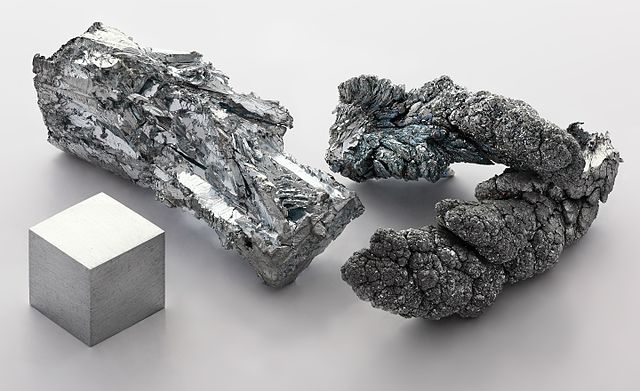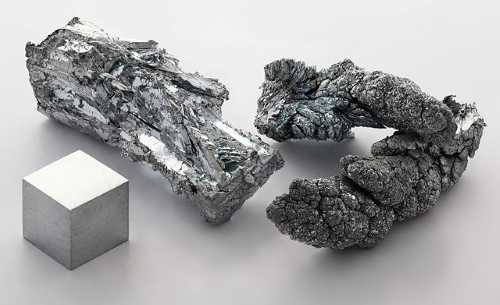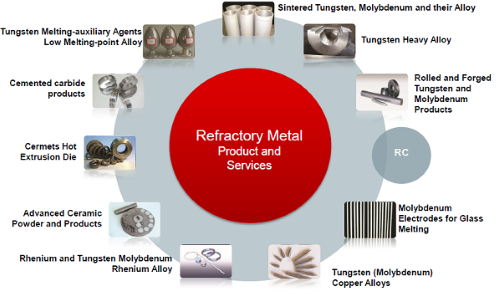What Are Refractory Metals?

What Are Refractory Metals?
Refractory metals are a group of metals with exceptionally high melting points and remarkable resistance to heat, wear, and corrosion. These metals remain stable at temperatures exceeding 1,650°C (3,000°F) and are indispensable in environments that require high-performance materials under extreme conditions. Industries such as aerospace, energy, and manufacturing rely heavily on refractory metals to ensure the durability and efficiency of critical components.

What Are the Properties of Refractory Metals?
Refractory metals possess several unique properties that make them vital in extreme applications:
- High Melting Points: Refractory metals have some of the highest melting points of any material. For example, tungsten (W) has the highest melting point of any metal at 3,422°C (6,192°F).
- Heat Resistance: They maintain structural integrity at elevated temperatures, such as molybdenum (Mo), which withstands heat up to 2,623°C (4,753°F).
- Corrosion Resistance: Tantalum (Ta) is highly resistant to corrosion and oxidation, even in highly acidic environments. It’s widely used in chemical reactors and medical devices.
- Strength and Durability: Even under high mechanical stress and extreme conditions, refractory metals like rhenium (Re) retain their strength.
- Wear Resistance: Tungsten is extremely wear-resistant, which makes it perfect for high-stress environments such as cutting tools and industrial machinery.
- Electrical and Thermal Conductivity: Metals like tungsten and molybdenum are highly conductive, making them ideal for use in electronic applications.

How to Use Refractory Metals?
Refractory metals are used in applications where heat, stress, and wear resistance are paramount. Some specific use cases include:
- Aerospace: High-performance turbine blades and rocket engine nozzles require refractory metals. For instance, tungsten and molybdenum alloys are commonly used in the manufacture of components for jet engines and space exploration. Molybdenum alloys are crucial in turbine blades that must withstand temperatures upwards of 1,800°C (3,272°F) in jet engines.
- Energy Production: Refractory metals like niobium and tantalum are used in nuclear reactors and energy production. Tantalum is used in reactor cores for its high resistance to radiation and heat. Molybdenum is employed in nuclear fuel cladding due to its ability to maintain structural integrity at high temperatures.
- Industrial Tools: Tungsten is used in cutting tools, mining equipment, and industrial machinery. Its ability to withstand wear and heat makes it a critical material for tool tips and drill bits, such as those used in oil and gas drilling where tools are exposed to extreme temperatures and pressures.
- Electronics: Tungsten and rhenium are used in electronic components like vacuum tubes, electrical contacts, and thermocouples. Tungsten is a primary material in high-performance semiconductors and lightbulb filaments due to its high conductivity and heat resistance.
A List of Five Common Refractory Metals
Tungsten is known for having the highest melting point of any metal, reaching 3,410°C, and boasts the highest thermal conductivity (173 W/(m·K)) among refractory metals. These exceptional properties make tungsten ideal for use in high-temperature environments, such as furnace components, turbine blades, sintering trays, and crucibles. It is also commonly found in electronics and lightbulb filaments. Tungsten heavy alloys (WHAs), which combine tungsten with materials like nickel and copper, are used in applications requiring high strength and thermal conductivity.
Molybdenum is prized for its high thermal conductivity (138 W/(m·K)) and mechanical strength at elevated temperatures, making it essential for components in heat-sensitive applications such as furnace parts, elevator brake pads, forging dies, and heat exchangers. Molybdenum is also used in glass melting electrodes due to its electrical conductivity. TZM, a molybdenum-based alloy containing zirconium and titanium, is frequently used for applications that require high strength at high temperatures, offering excellent performance in demanding environments.
Tantalum is particularly valued for its extraordinary resistance to corrosion, especially against acids like hydrochloric, nitric, and sulfuric acids. This makes tantalum a critical material in the chemical industry, where it is used in heat exchangers, reaction vessels, and tubes. Additionally, tantalum's resistance to chemical reactions makes it ideal for thin-film deposition through sputtering, a process used in electronics for creating functional coatings. Tantalum tubes and sputtering targets are some of the featured products used in these industries.
Niobium stands out for its remarkable ductility and relatively low density, making it an ideal material for high-performance alloys that require strength without adding weight. Niobium is widely used in aerospace applications, particularly in rocket engines and structural components, where it can withstand high temperatures. Niobium's low thermal neutron cross-section also makes it suitable for next-generation nuclear applications. One of the most commonly used niobium alloys is C-103, which is employed in aerospace due to its excellent high-temperature strength and formability.
Rhenium is one of the most heat-resistant metals, with a melting point second only to tungsten, and it offers exceptional high-temperature stability. This makes rhenium an essential material in jet engine components, thermocouples, and high-temperature catalytic processes. Rhenium-based alloys are used extensively in the aerospace industry, while rhenium catalysts are crucial in refining petroleum and other chemical processes.
Conclusion
Refractory metals like tungsten, molybdenum, tantalum, rhenium, and niobium play a critical role in aerospace, energy, and electronics. Their exceptional properties—high melting points, heat resistance, and durability—ensure they remain essential in applications requiring extreme performance. From turbine blades and rocket nozzles to nuclear reactors and electronics, refractory metals continue to drive advancements in high-tech applications worldwide. For more information, please check Advanced Refractory Metals (ARM).
{{item.content}}
LEVE A REPLY
{{item.children[0].content}}
{{item.content}}






